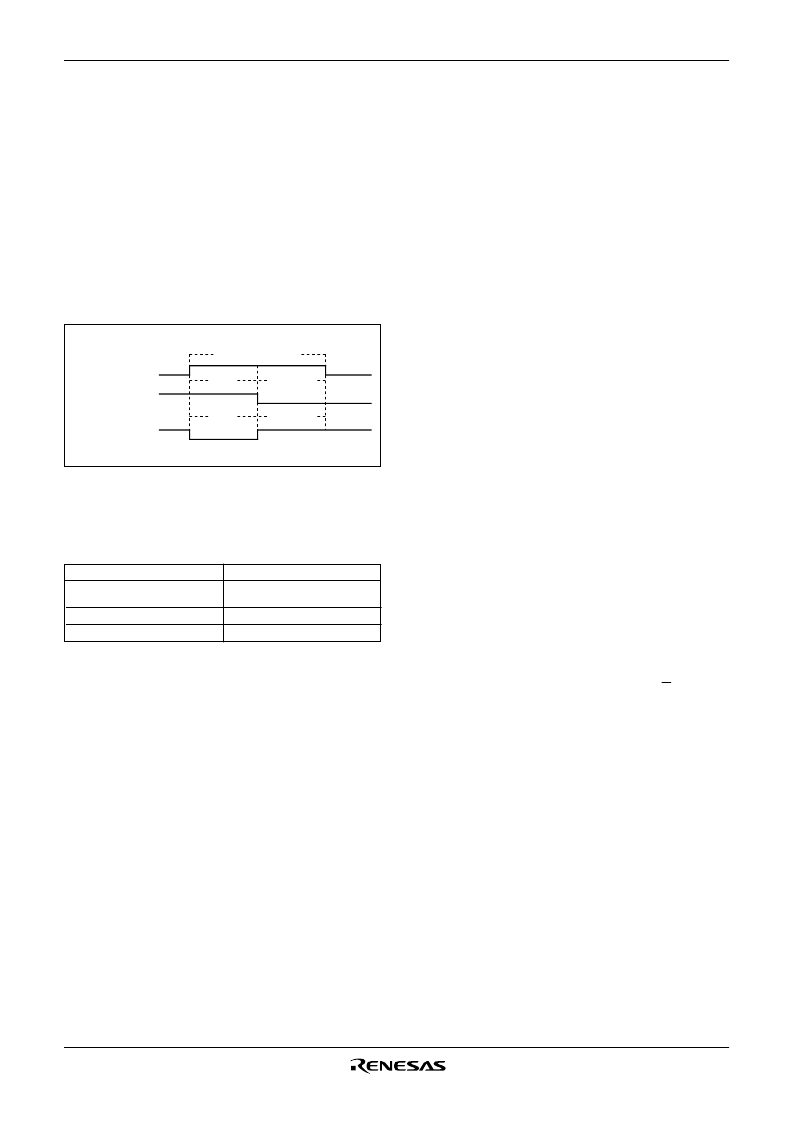- 您現(xiàn)在的位置:買賣IC網(wǎng) > PDF目錄359059 > M37281MKH-XXXSP (Renesas Technology Corp.) SINGLE-CHIP 8-BIT CMOS MICROCOMPUTER with CLOSED CAPTION DECODER and ON-SCREEN DISPLAY CONTROLLER PDF資料下載
參數(shù)資料
| 型號: | M37281MKH-XXXSP |
| 廠商: | Renesas Technology Corp. |
| 英文描述: | SINGLE-CHIP 8-BIT CMOS MICROCOMPUTER with CLOSED CAPTION DECODER and ON-SCREEN DISPLAY CONTROLLER |
| 中文描述: | 單芯片8位CMOS微機隱蔽字幕解碼器和屏幕顯示控制器 |
| 文件頁數(shù): | 42/172頁 |
| 文件大小: | 1319K |
| 代理商: | M37281MKH-XXXSP |
第1頁第2頁第3頁第4頁第5頁第6頁第7頁第8頁第9頁第10頁第11頁第12頁第13頁第14頁第15頁第16頁第17頁第18頁第19頁第20頁第21頁第22頁第23頁第24頁第25頁第26頁第27頁第28頁第29頁第30頁第31頁第32頁第33頁第34頁第35頁第36頁第37頁第38頁第39頁第40頁第41頁當(dāng)前第42頁第43頁第44頁第45頁第46頁第47頁第48頁第49頁第50頁第51頁第52頁第53頁第54頁第55頁第56頁第57頁第58頁第59頁第60頁第61頁第62頁第63頁第64頁第65頁第66頁第67頁第68頁第69頁第70頁第71頁第72頁第73頁第74頁第75頁第76頁第77頁第78頁第79頁第80頁第81頁第82頁第83頁第84頁第85頁第86頁第87頁第88頁第89頁第90頁第91頁第92頁第93頁第94頁第95頁第96頁第97頁第98頁第99頁第100頁第101頁第102頁第103頁第104頁第105頁第106頁第107頁第108頁第109頁第110頁第111頁第112頁第113頁第114頁第115頁第116頁第117頁第118頁第119頁第120頁第121頁第122頁第123頁第124頁第125頁第126頁第127頁第128頁第129頁第130頁第131頁第132頁第133頁第134頁第135頁第136頁第137頁第138頁第139頁第140頁第141頁第142頁第143頁第144頁第145頁第146頁第147頁第148頁第149頁第150頁第151頁第152頁第153頁第154頁第155頁第156頁第157頁第158頁第159頁第160頁第161頁第162頁第163頁第164頁第165頁第166頁第167頁第168頁第169頁第170頁第171頁第172頁

M37281MAH–XXXSP,M37281MFH–XXXSP,M37281MKH–XXXSP, M37281EKSP
Rev.1.01 2003.07.16 page 42 of 170
8.6.8 START/STOP Condition Detect Conditions
The START/STOP condition detect conditions are shown in
Figure 8.6.11 and Table 8.6.3. Only when the 3 conditions of Table
8.6.3 are satisfied, a START/STOP condition can be detected.
Note:
When a STOP condition is detected in the slave mode
(MST = 0), an interrupt request signal “IICIRQ” is generated to the
CPU.
Fig. 8.6.11 START Condition/STOP Condition Detect Timing Dia-
gram
Standard Clock Mode
6.5
μ
s (26 cycles) < SCL
release time
3.25
μ
s (13 cycles) < Setup time
3.25
μ
s (13 cycles) < Hold time
High-speed Clock Mode
1.0
μ
s (4 cycles) < SCL
release time
0.5
μ
s (2 cycles) < Setup time
0.5
μ
s (2 cycles) < Hold time
Table 8.6.3 START Condition/STOP Condition Detect Conditions
Note:
Absolute time at
φ
= 4 MHz. The value in parentheses denotes the num-
ber of
φ
cycles.
Hold time
Setup
time
SCL
SDA
(START condition)
SDA
(STOP condition)
SCL release time
Hold time
Setup
time
8.6.9 Address Data Communication
There are two address data communication formats, namely, 7-bit
addressing format and 10-bit addressing format. The respective ad-
dress communication formats is described below.
(1) 7-bit Addressing Format
To meet the 7-bit addressing format, set the 10BIT SAD bit of the I
2
C
control register (address 00F9
16
) to “0.” The first 7-bit address data
transmitted from the master is compared with the high-order 7-bit
slave address stored in the I
2
C address register (address 00F7
16
).
At the time of this comparison, address comparison of the RBW bit of
the I
2
C address register (address 00F7
16
) is not made. For the data
transmission format when the 7-bit addressing format is selected,
refer to Figure 8.6.12, (1) and (2).
(2) 10-bit Addressing Format
To meet the 10-bit addressing format, set the 10BIT SAD bit of the
I
2
C control register (address 00F9
16
) to “1.” An address comparison
is made between the first-byte address data transmitted from the
master and the 7-bit slave address stored in the I
2
C address register
(address 00F7
16
). At the time of this comparison, an address com-
parison between the RBW bit of the I
2
C address register (address
00F7
16
) and the R/W bit which is the last bit of the address data
transmitted from the master is made. In the 10-bit addressing mode,
the R/W bit which is the last bit of the address data not only specifies
the direction of communication for control data but also is processed
as an address data bit.
When the first-byte address data matches the slave address, the
AAS bit of the I
2
C status register (address 00F8
16
) is set to “1.” After
the second-byte address data is stored into the I
2
C data shift register
(address 00F6
16
), make an address comparison between the sec-
ond-byte data and the slave address by software. When the address
data of the 2nd bytes matches the slave address, set the RBW bit of
the I
2
C address register (address 00F7
16
) to “1” by software. This
processing can match the 7-bit slave address and R/W data, which
are received after a RESTART condition is detected, with the value
of the I
2
C address register (address 00F7
16
). For the data transmis-
sion format when the 10-bit addressing format is selected, refer to
Figure 8.6.12, (3) and (4).
相關(guān)PDF資料 |
PDF描述 |
|---|---|
| M37534E4GP | SINGLE-CHIP 8-BIT CMOS MICROCOMPUTER |
| M37534E4FP | SINGLE-CHIP 8-BIT CMOS MICROCOMPUTER |
| M37544 | SINGLE-CHIP 8-BIT CMOS MICROCOMPUTER |
| M37548G1FP | SINGLE-CHIP 8-BIT CMOS MICROCOMPUTER |
| M37549G1FP | 32K x 8 Static RAM; Density: 256 Kb; Organization: 32Kb x 8; Vcc (V): 4.5 to 5.5 V; |
相關(guān)代理商/技術(shù)參數(shù) |
參數(shù)描述 |
|---|---|
| M372899234 | 制造商:ITW Switches 功能描述:IN-RUSH |
| M372F3200DJ3-C | 制造商:SAMSUNG 制造商全稱:Samsung semiconductor 功能描述:32M x 72 DRAM DIMM with ECC Using 16Mx4, 4K & 8K Refresh, 3.3V |
| M372F3280DJ3-C | 制造商:SAMSUNG 制造商全稱:Samsung semiconductor 功能描述:32M x 72 DRAM DIMM with ECC Using 16Mx4, 4K & 8K Refresh, 3.3V |
| M3731 | 制造商:未知廠家 制造商全稱:未知廠家 功能描述:4 SIRENS & MACHINE GUN 2 LEDS BLINKING |
| M3731-1 | 制造商:未知廠家 制造商全稱:未知廠家 功能描述:4 SIRENS & MACHINE GUN 2 LEDS BLINKING |
發(fā)布緊急采購,3分鐘左右您將得到回復(fù)。